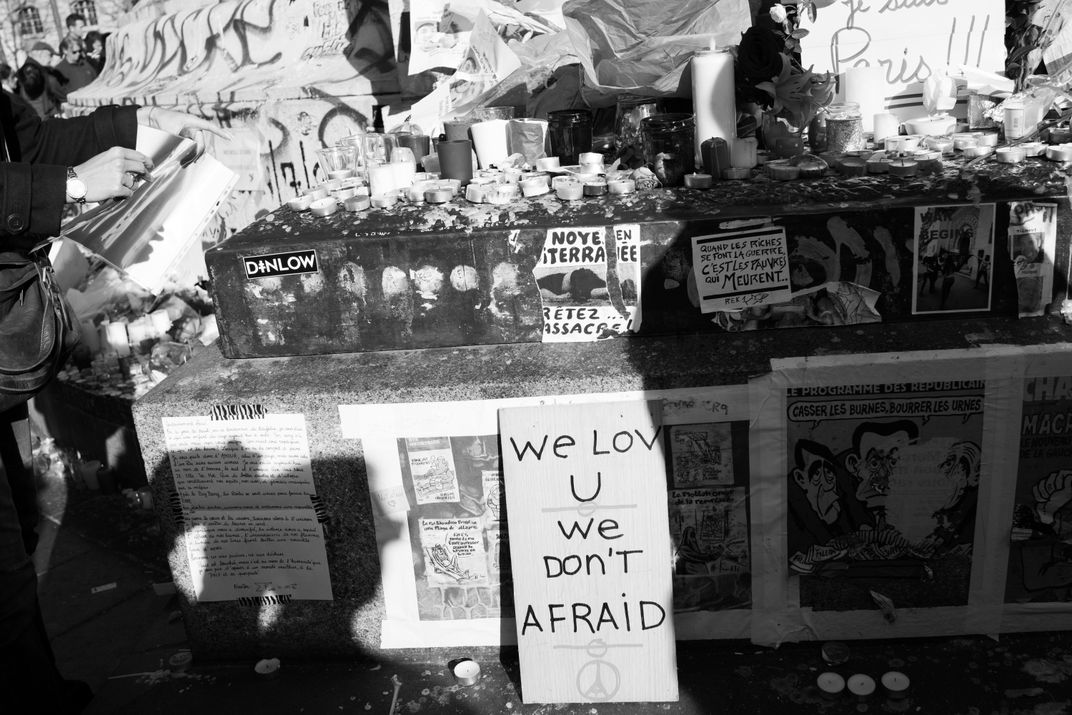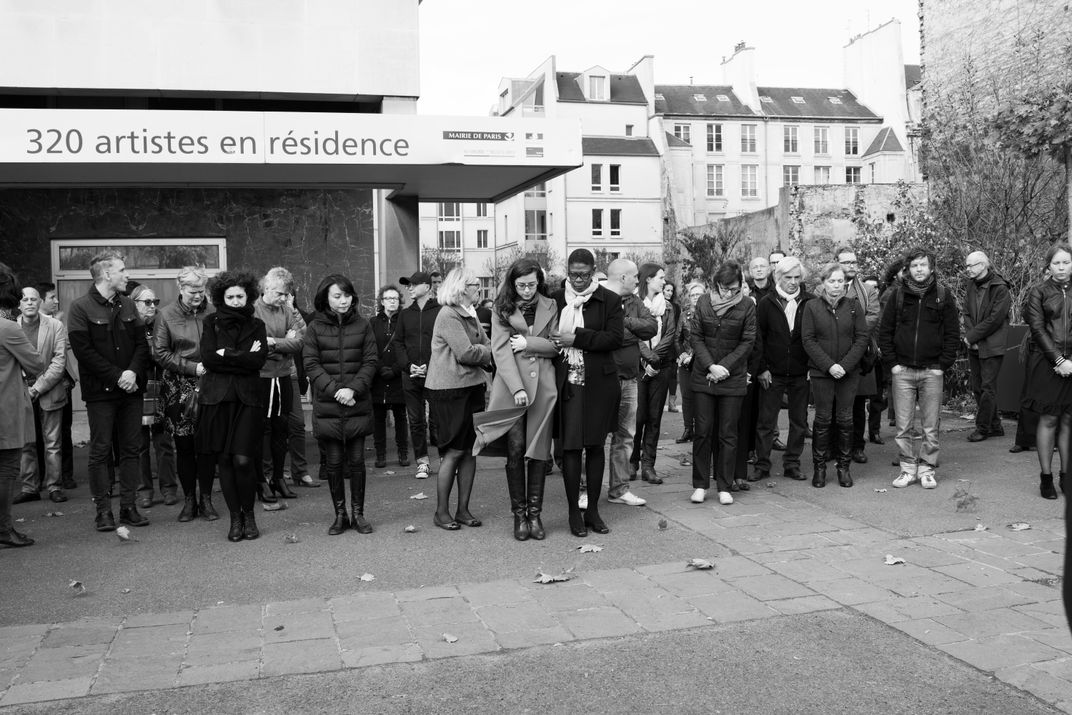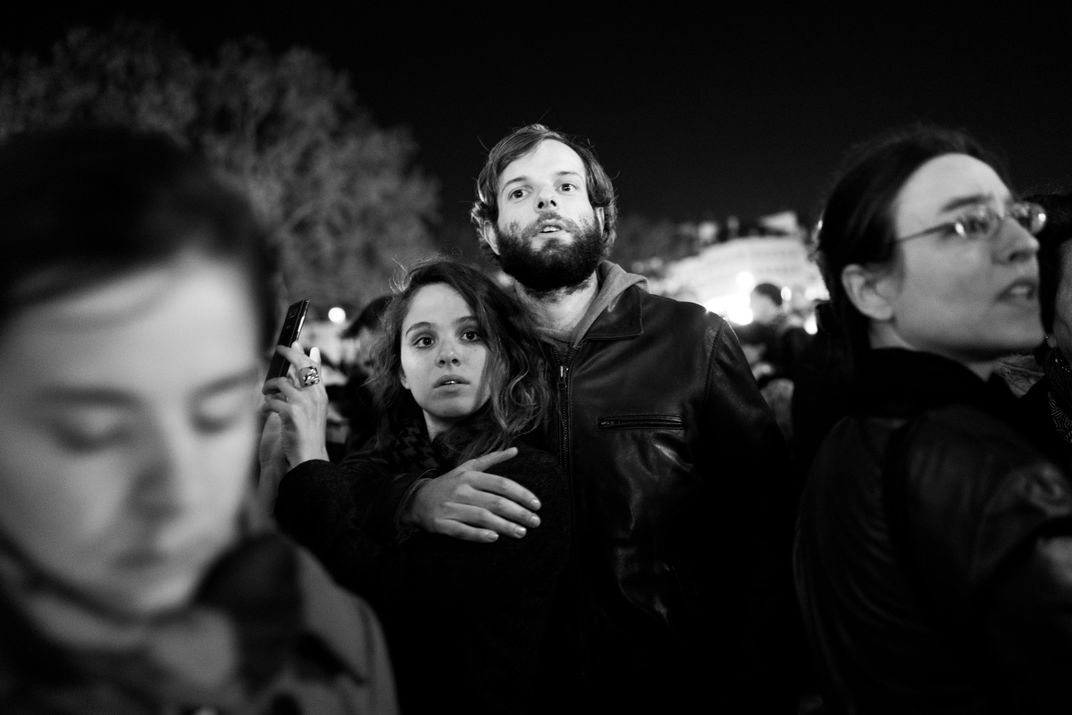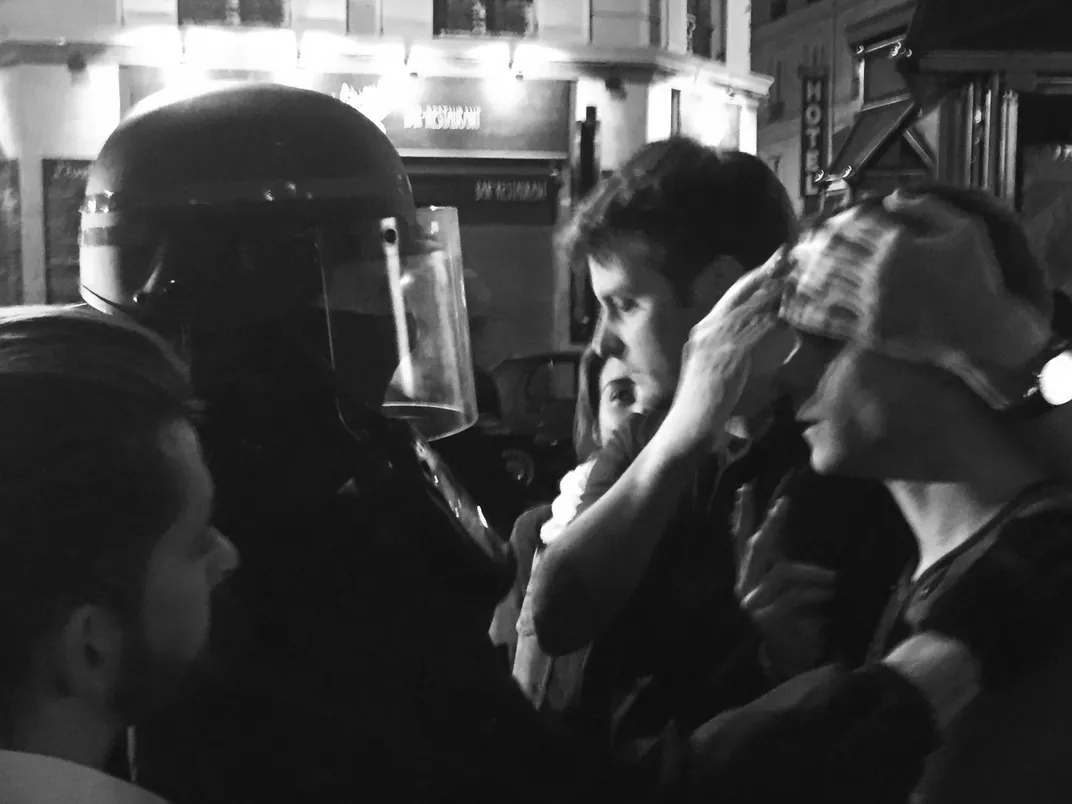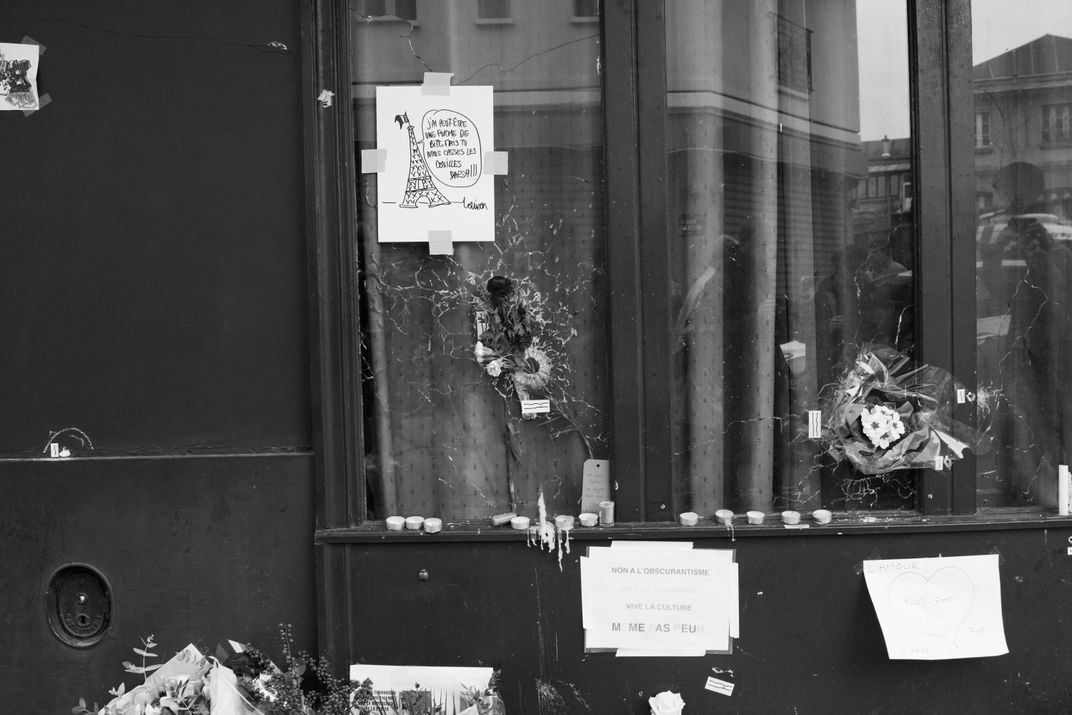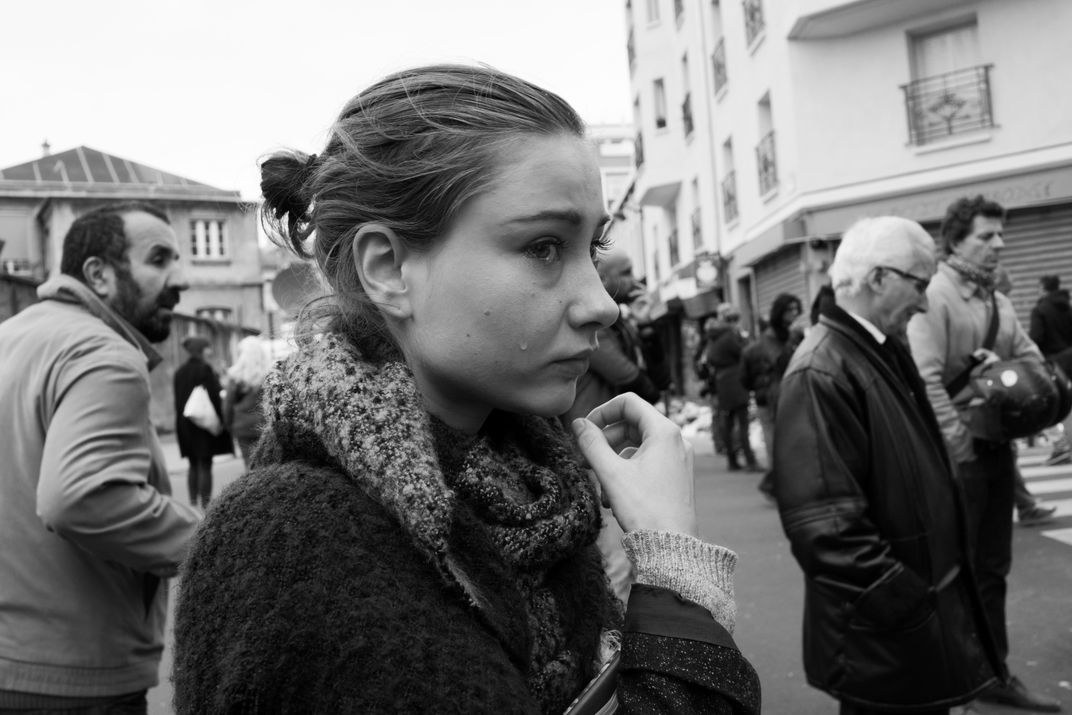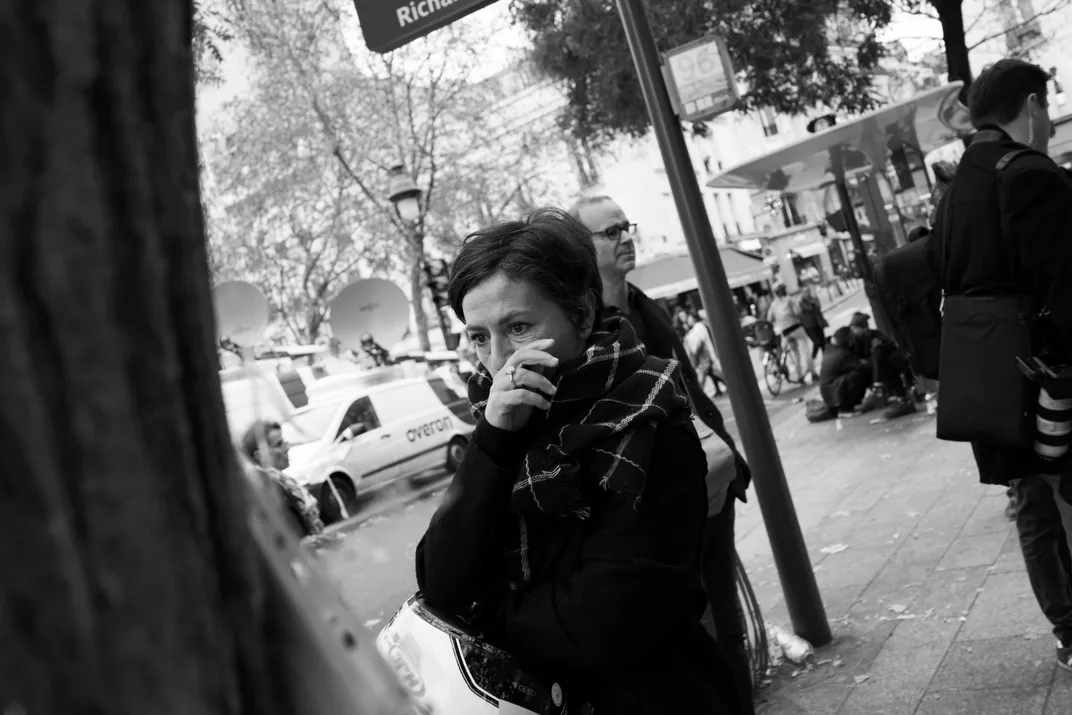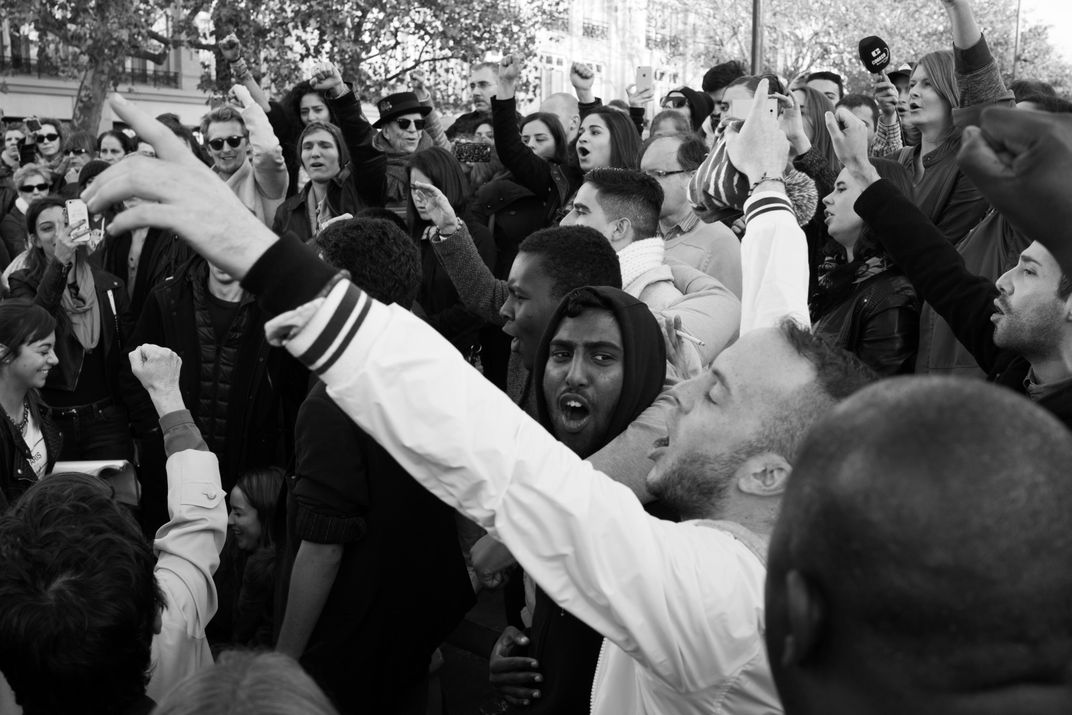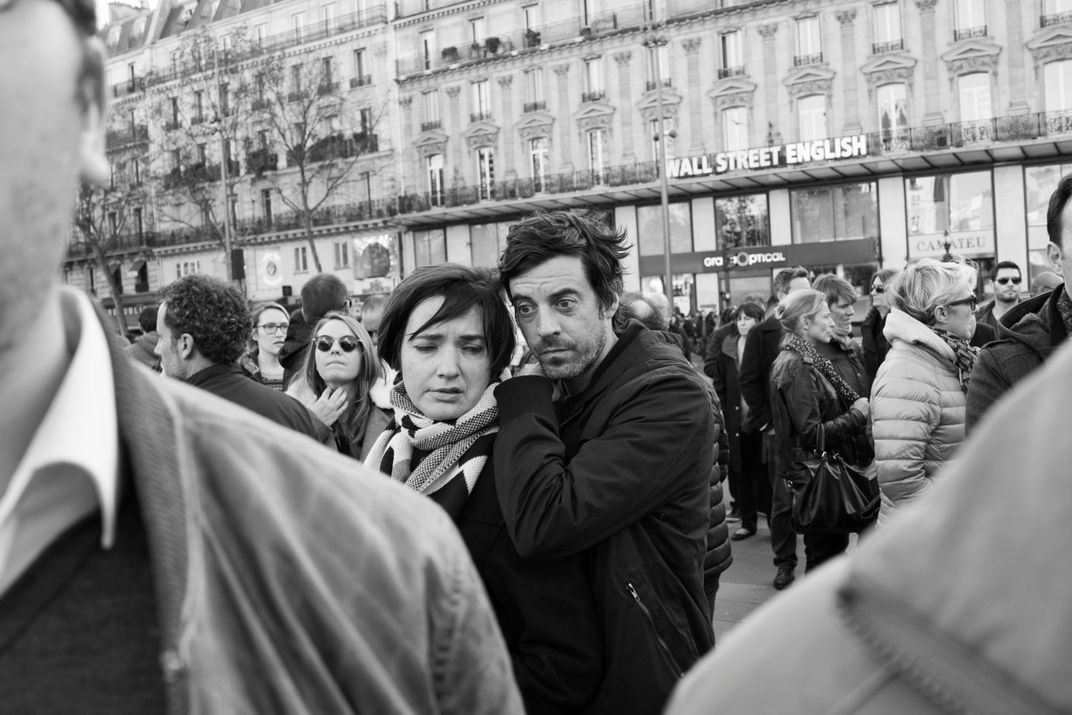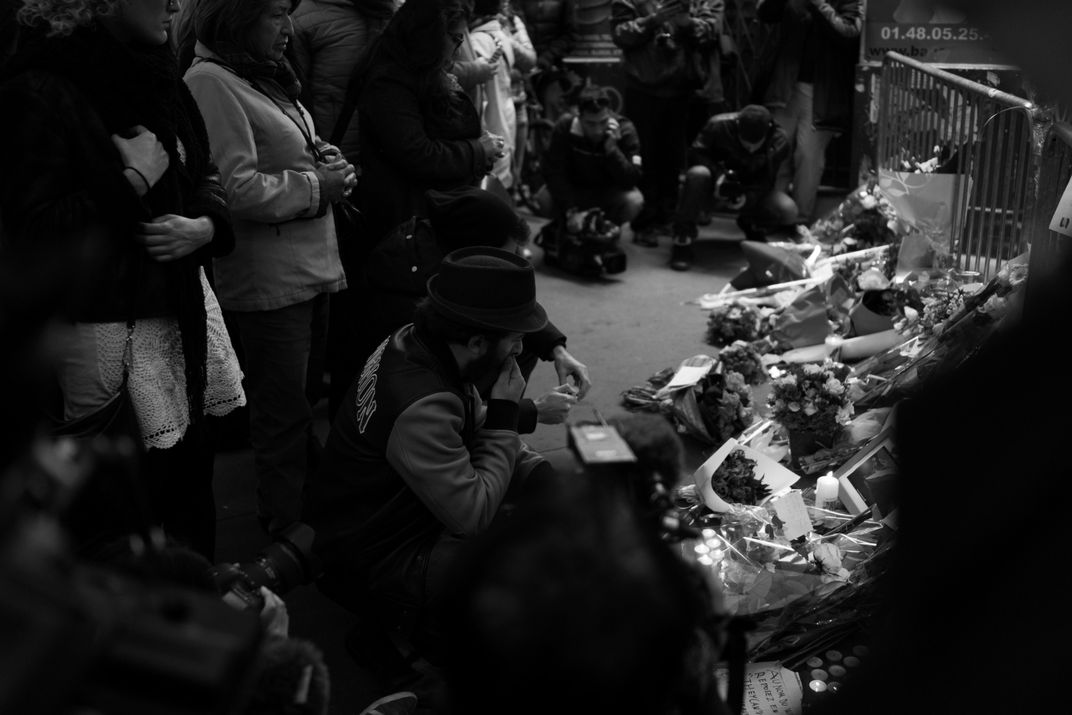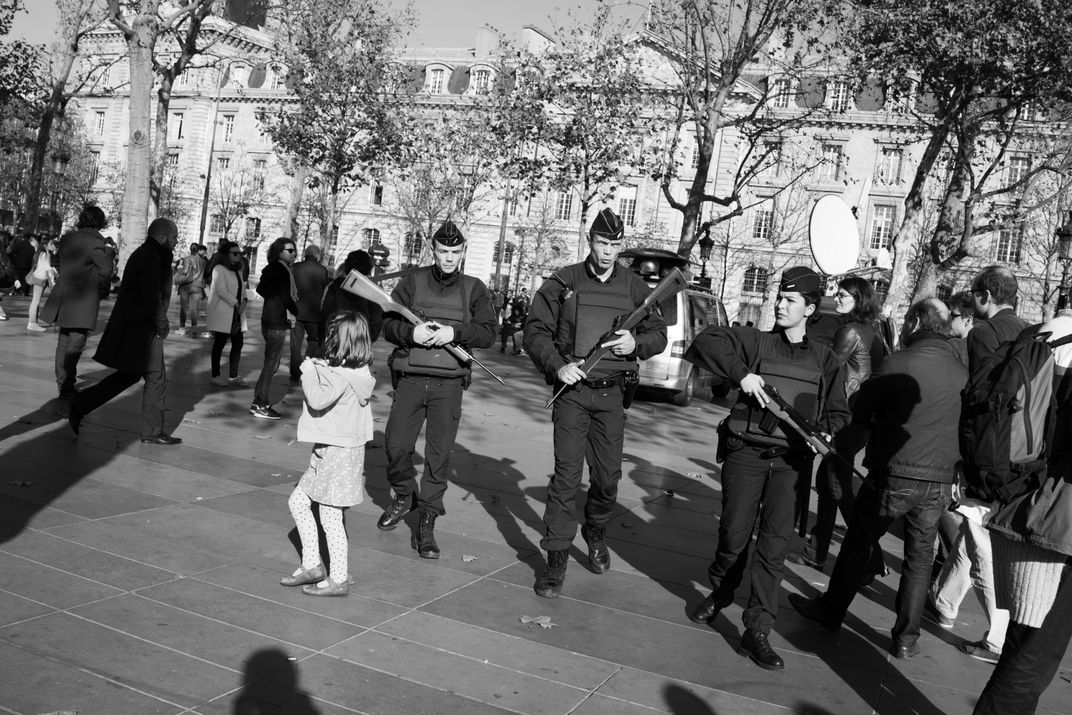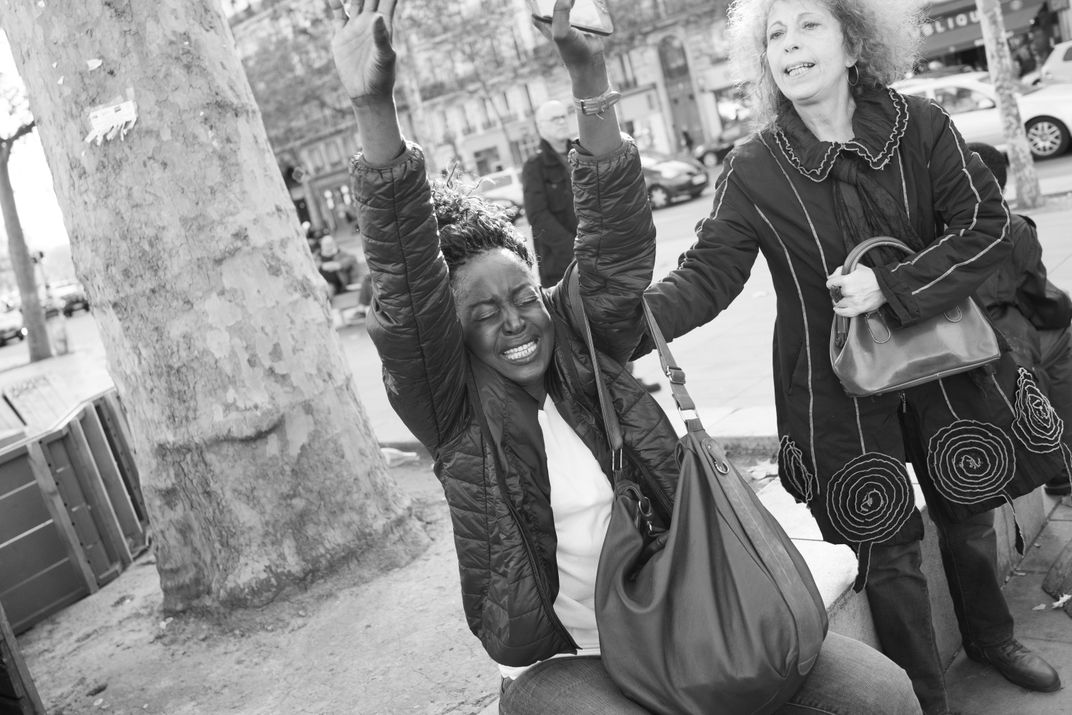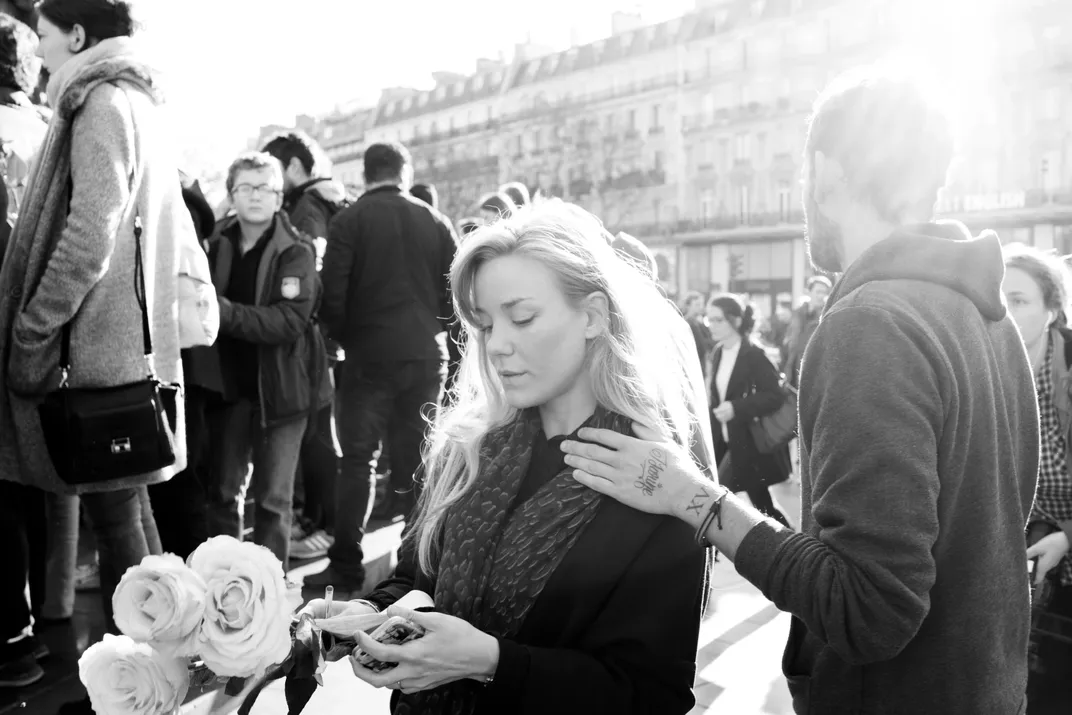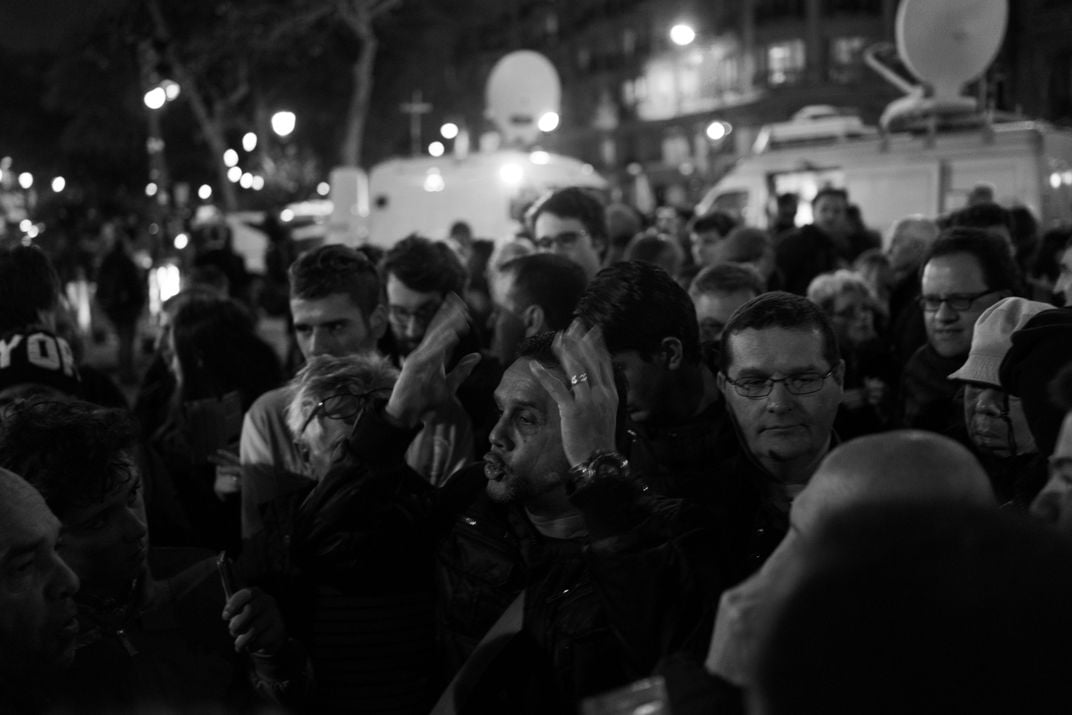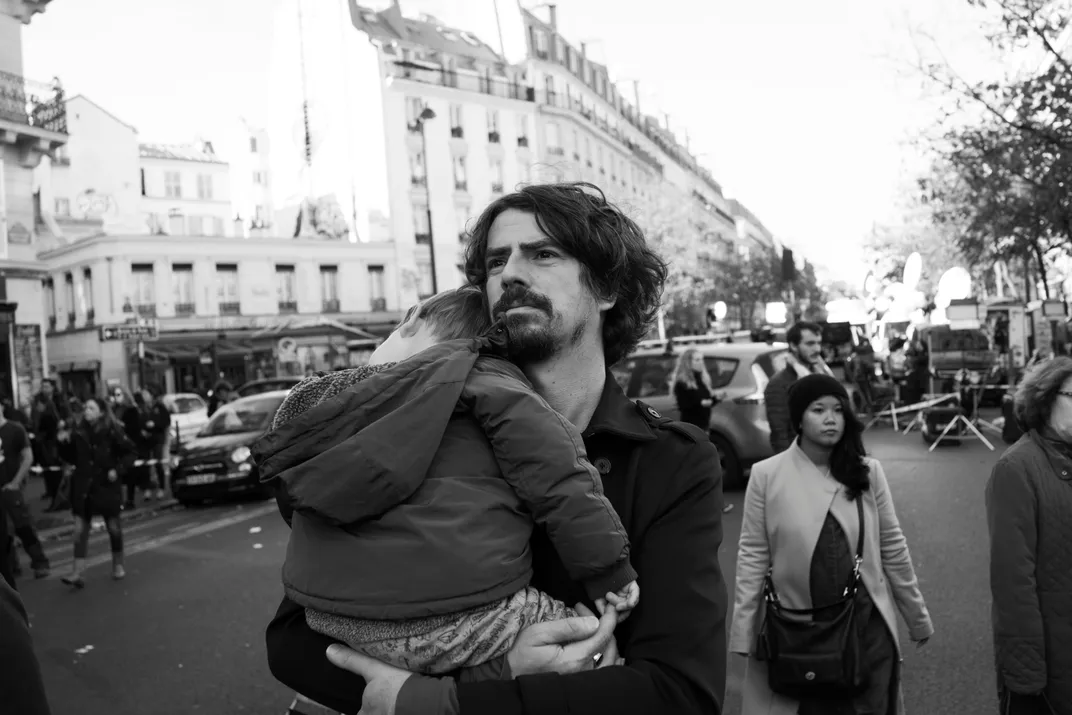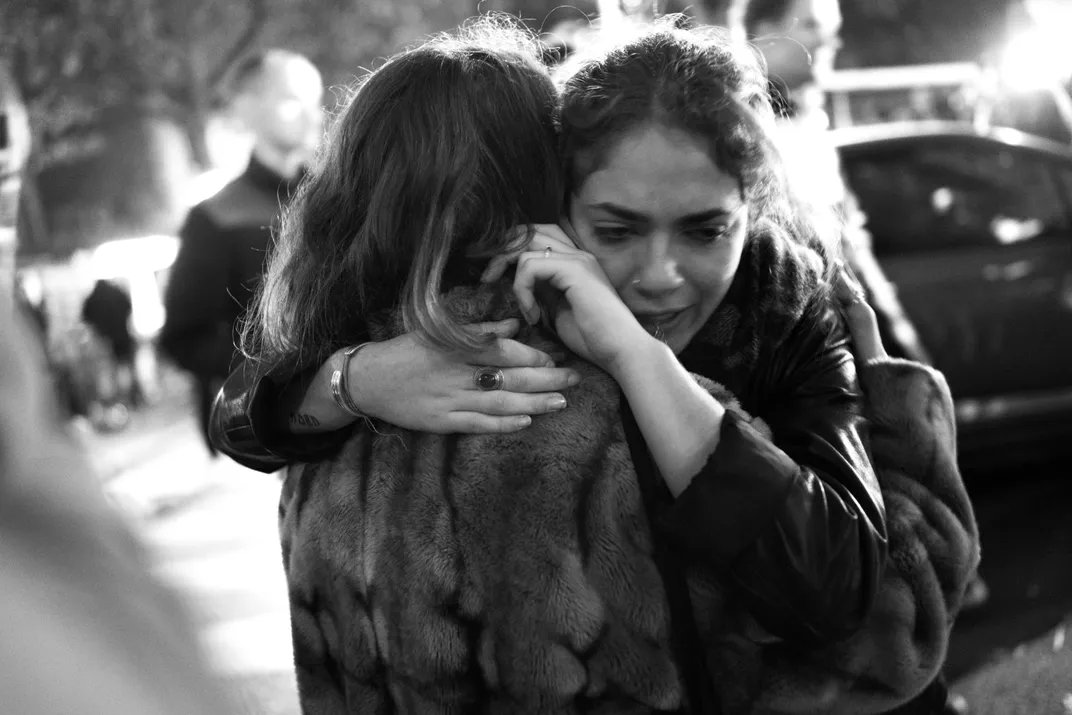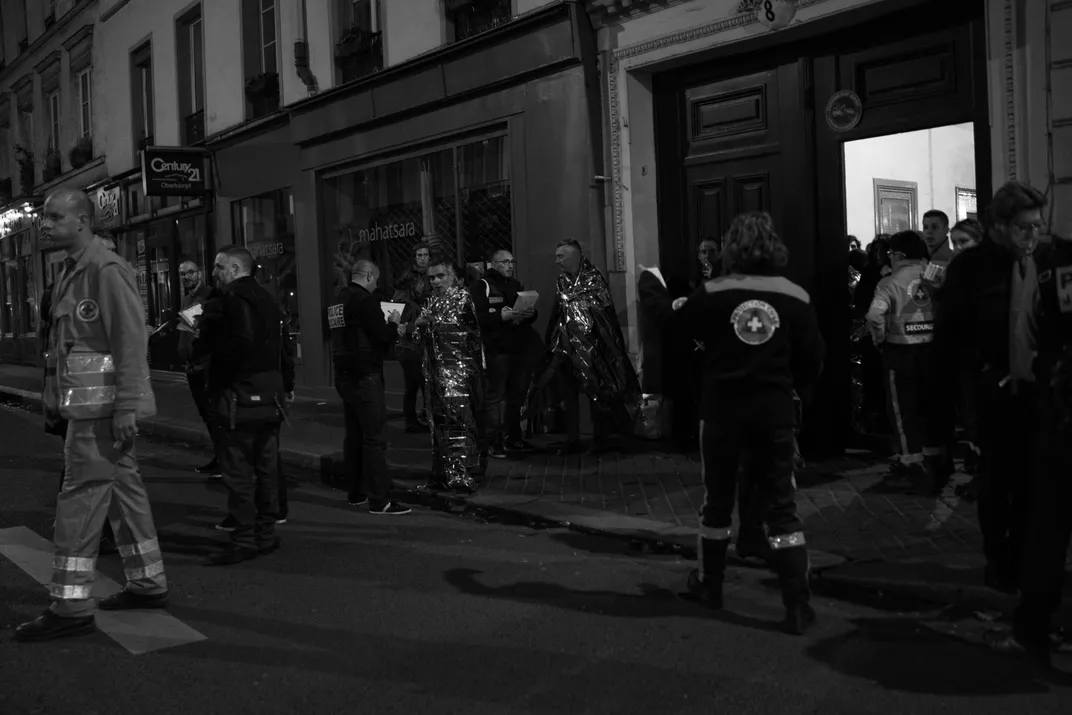Photographer Cristian Movilă’s Eyewitness Photos of the Attack on Paris and its Aftermath
The experienced photographer says that nothing could have prepared him for what he saw
Cristian Movilă has been working as a photojournalist, often in areas of conflict, for over a decade. He is based in Bucharest, Romania, and was in Paris last week for Paris Photo, an international photography festival. Last Friday night, he was passing through the Bataclan Theatre neighborhood, when the terrorist attacks in Paris started, the most deadly of which occurred at the theatre. When Movilă tried to flee the area, he found himself outside of an emergency exit of the Bataclan, and began documenting the scene on his iPhone and on his Sony RX1R. He has been posting images from the attacks and the aftermath on his Instagram and Facebook pages. This week, he spoke to Smithsonian.com about his experience.
You’re an experienced conflict and documentary photographer, and you work with major publications, including Smithsonian magazine. How did you get to where you are today, and how has your work evolved?
I started working for the New York Times and Time magazine back in 2005, 2006, with a story on Gaza. Since then I’ve been working as a freelancer, but mainly with them. I’m not comfortable with the phrase “conflict photographer,” but I cover a lot of conflicts. I’m trying to portray myself more as more of a visual artist. Lately, I’m focused on portraying my work as art, even if it’s documentary.
You were near the Bataclan during the terrorist attacks in Paris last week. Can you talk about what happened?
When I visit Paris, I stay in that area, near La Republic. I was near the Bataclan with friends, passing through the area.
I believe the first attack was in another café, and I got the news on my phone – that there are some clashes or somebody started shooting near the stadium or something like this. And then they started to send the other [notifications] and the news came in.
By mistake I went down a very small street that lead to one of the exits of the Bataclan Theatre. I don’t exactly how I arrived there, I was running and I arrived there, and I saw people on the streets, crying and screaming. It was horrible. What I saw there in the beginning was really, really hard. Then I started to shoot a little bit. You can tell in some of the pictures, I didn’t even take my camera from my pocket, I just used my phone.
In my images, you can see people coming out of the exit of the theater. By then the police were already there, but you could still hear the sound of the shootings inside. I saw terrified people running for their lives, their screams intermittently drowned out by the sound of gunfire.
By then, I was texting close friends, fellow photographers, and the editors I was with most of the day. I wrote that I had gone home because I did not want them to worry. When I received a message from a very good close photographer friend that there were more than 20 people confirmed dead, I started crying.
There were a lot of police running around heavily armed with masks on their faces, a lot of ambulances, and many people in civil clothing but with police judiciaire armbands. These policemen were trying to talk with people who had managed to escape from inside the Bataclan, writing down their names, details, whatever they could. The injured were dragged along the small alleyway by others, leaving behind bloody trails on the pavement. An injured woman was screaming in agony outside an emergency exit.
I want to avoid going into any more detail. What I saw was terrifying. I’ve been a witness to conflict for many years. I’ve seen people dying near me. I’ve seen explosions, all kinds of things. When you go in conflict, you assume that you will hear, that you will see, that it is possible that different things will happen to you. When you are in Paris and you experience such a thing, you are totally unprepared.
Here’s an analogy: When you are an athlete, like for example a boxer, when you tense your muscles, as a boxer, and somebody hits you in the stomach, you won’t have a problem because your stomach is a rock. But when you walk around Paris, and you’re looking around, absorbing the energy of the people, the beauty, the really good weather, and then something happens like that, and you’re unprepared... It’s exactly like a boxer, if he isn’t tensing his muscles, of course he’ll be hit like a normal person.
When did you stop taking photographs? At what point does a conflict photographer’s job end?
I was not even thinking, I was just shooting. I was just on automatic mode in a way. I was scared for everyone, for my friends, for my colleagues, for my editors because over the weekend was Paris Photo and everyone was there. Imagine that everyone who you work with and for is in town. You are scared for everyone, not just for you.
I remained in that area until really late, until 3 am, until everyone was taken to the hospital. I couldn’t sleep after I saw what I saw there. The second day, I went back, of course. I was photographing people coming with flowers and candles. At one point, I saw two girls. One girl was trying to tell another one: your two friends died inside. She was finding out in the moment, when I was near. She was totally devastated.
But here’s a side note about the power of Facebook: I put her picture online, and a big account of photography on Facebook shared my photograph. After 30 minutes I received a private message, “Cristian, I am the girl in the picture.” I wrote back, “Thank you for writing me. Can I call you?”
I called her and she started to cry and to explain exactly what had happened. It was really, really intense. What an example of how technology and social media can help [people connect in a time of chaos]. We were two complete strangers, united by a tragedy. That gives me hope. For the first time, I really understood the greatness of social media and how important it is to share something.
You’ve continued taking photos around Paris since the attacks. How has the national reaction unfolded over the last few days?
Every day until I left on Tuesday, I took photographs. There’s a lot of compassion, thousands of people gathering, even in this kind of situation, when you know [the terrorists] can hit again. They were like, “We are not afraid, we are one.” On Sunday night, I went to the Notre Dame Cathedral. In front was a big number, a few thousand people gathering together for the memorial service. It was really packed with police and so on, but people of ages, young, old, they were there without any fear. This for me was like, “Wow.” Two days after a terrorist attack they were not afraid, and they went to the memorial in such a big number. It was an act of love, an act of compassion. They love each other in this kind of moment. I really believe that in this kind of situation, it’s normal and it’s the right thing to be together, to be one.
After such a moment, we are more united, sharing love with each other. But unfortunately this happens only for a few days. We all go back to normal, back to our interests. And, I’m scared [of what could happen next] of course.
Have you photographed specific people whose stories stuck with you through the last few days?
The girl I told you about, of course. I was struck by the powerful message she sent to me. There was also a woman, she was out of Paris, as I understand it. She went to Plaza de La Republic to meet with a friend two days after the attacks. She found out that her boys had died. You can see in the photo, she is really screaming, not just crying. A friend asked her to come to Paris and she told her there, and she was really devastated, really screaming.
What parts of the national response to the attacks have you sought to document besides crowds? Were there specific locations or memorials?
In all of the locations, there were people every day, in the morning, in the afternoon, in the evening, paying respect, paying tribute, in a way, by staying there. In front of the Plaza de la Republic, people are gathering everyday. They are paying condolence to the families and to the victims through at least a moment of silence, flowers, candles, these kinds of things. In the last days, a lot of young people have gone there to try to celebrate, not the death, but celebrate love, probably. This for me was strange, in a way, but beautiful.
You recently photographed a tragedy at a music venue in Romania -- the fire at Colectiv Club that happened last month. How are you feeling after documenting both of these serious tragedies, ones you were “unprepared for” in such a short period of time?
This was rare – one after another. I was not going to the concert in Bucharest; I was going exactly in front of this club, to a van where they cook burgers during festivals. I went and I saw no van, so I entered Colectiv, the club, I saw a few friends, took one picture, and I left. After an hour or less, somebody called me and said, “Go there, there’s a big fire, people are dying.” I went there on my scooter and I saw what I saw.
That timing is unbelievable.
It’s been really shocking. I have friends who are still in the hospital. A few people that I knew, not very close, but I knew them, they are dead. Of course, that really affects me. We are so fragile.
